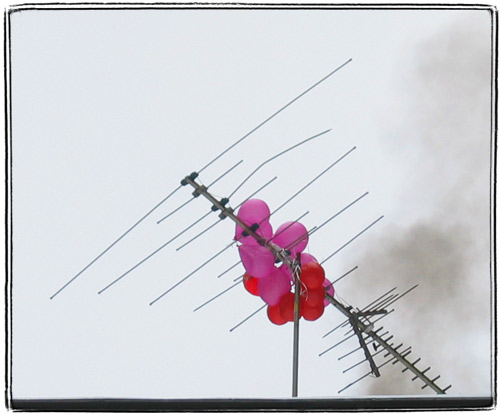Want to learn how to lower your electric bill and organize your power cords? Then .
Here is something I wanted to write up for while, but never had the time. But today I finished my book on my train ride to work, and now on my way back I have nothing to do, s I’ll write this up on my blackberry.
Remember, I used to bitch about high electric bills. Well, I think I found a way to reduce them. I found a culprit. Its name is Wall Wart. It’s also known as a power adapter, 12 volt transformer and #$%^ thing that takes up two outlets at the same time.
The sad fact is that most electronic appliances operate on a voltage that’s close to 12V. Since in US electrical grid mostly operates at 120V (a 240V line split into two) an a 120V to 12V transformer is needed.
Why isn’t there a separate 12 V line? Well, 12V electricity doesn’t travel well, so there is no way to pipe it directly from the power plant. And in any case, all the devices use current at different amperage, different jacks are needed and some devices have built in transformers. In one word – legacy issues. Two words. Anyway, back to the story. So what do I hate wall warts?
They are expensive. Did you ever try to buy a new charger for your cell phone? They cost a fortune. Without them electronics would be much cheaper.
They consume from 1 to 20 Watts in standby mode. Here is an article about that. There are between 20 and 30 wall warts in my apartment. And they are hungry.
They use up outlets.
Their thin wires create a mess, the plugs that go into the device often pop out inconveniently.
They generate heat.
They are ugly.
I hate them. I looked in vain for a universal power supply that would be able to feed all the devices, but I could not find any (same story with the personal power meter btw.)
Well, my solution is pretty simple. I went out and bought a bunch of power strips (ones with fat slots for wall warts). Then the hard part – I rounded up all the wall warts. I found a few from devices that I no longer used. Those went to my junk box.
Then I separated the wall warts that should always be on (phone and answering machine) and plugged them into their own strip. My computer and all devices connected to it went onto a second power strip. My wife’s computer and it devices went onto the third. I’ve done the same thing with the entertainment center. Tivo and cable box went onto one strip, everything else – onto another.
Whew. Now I turn off all the unnecessary devices at once. And the bill for last month was $20 lower than the one for the same month a year ago. Of course it’s not a good way to compare, but I’ll keep checking.
And if you read this far, here is a bonus rant. Did you ever try to mount a power strip on a wall? Most power strips have these nasty little keyholes on the back. You are supposed to make a paper template, screw in 2 or four screws and hang the power strip on those. There is no margin for error there. The screws must have correctly sized heads, must line up precisely, and be at the right angle with the wall. Of course, when you hang the strip it will look skewed. And when you’ll hang it straight, the screws will pop out of the sheetrock wall when you pull on it. Aaaaaaaargh.
Now to the solution. At first I experimented with drilling holes. That way I could just mount it on the wall with a few screws through the body of the strip. Well, it doesn’t work on all strips. On most I would have to drill diagonal holes or risk destroying the wiring.
The final solution is simple: I epoxy two pieces of hard plastic to the back of the strip, leaving a few inches sticking out. Drill two holes through that – and voila – instant hanging brackets.



